My partner Vins and I have been travel blogging for the past 15 years and Tokyo is one of our favorite cities. The Japanese capital might be known for its neon-lit streets and high-tech everything, but you don’t need to spend a fortune to enjoy this megacity!
Believe it or not, Tokyo is packed with awesome free experiences — from historic temples to futuristic city views, quirky street scenes, and even some unexpected cultural gems. So if you’re on a budget (or just love a good freebie), this list is for you!
Here are some of the countless attractions in Tokyo that you can enjoy for FREE. Note that the number is only for easy reference and is not an indication of any particular ranking.
WAIT, WAIT, WAIT! If you are also visiting Osaka, please also visit our The Poor Traveler Masterlist. Here, we compiled travel essentials, including immigration requirements and all our recommended hotels and attractions. Just visit this page: TPT Masterlist. Then, scroll until you see the section about Osaka. We also have a compilation for other destinations around the world.
1. Tokyo Metropolitan Government Building
Most tourists rush to Tokyo SkyTree or Tokyo Tower for those panoramic city views. And that’s very understandable. After all, these are the two tallest structures in Japan. But did you know there’s a way to soak in Tokyo’s skyline for free? Enter the Tokyo Metropolitan Government Building in Shinjuku!
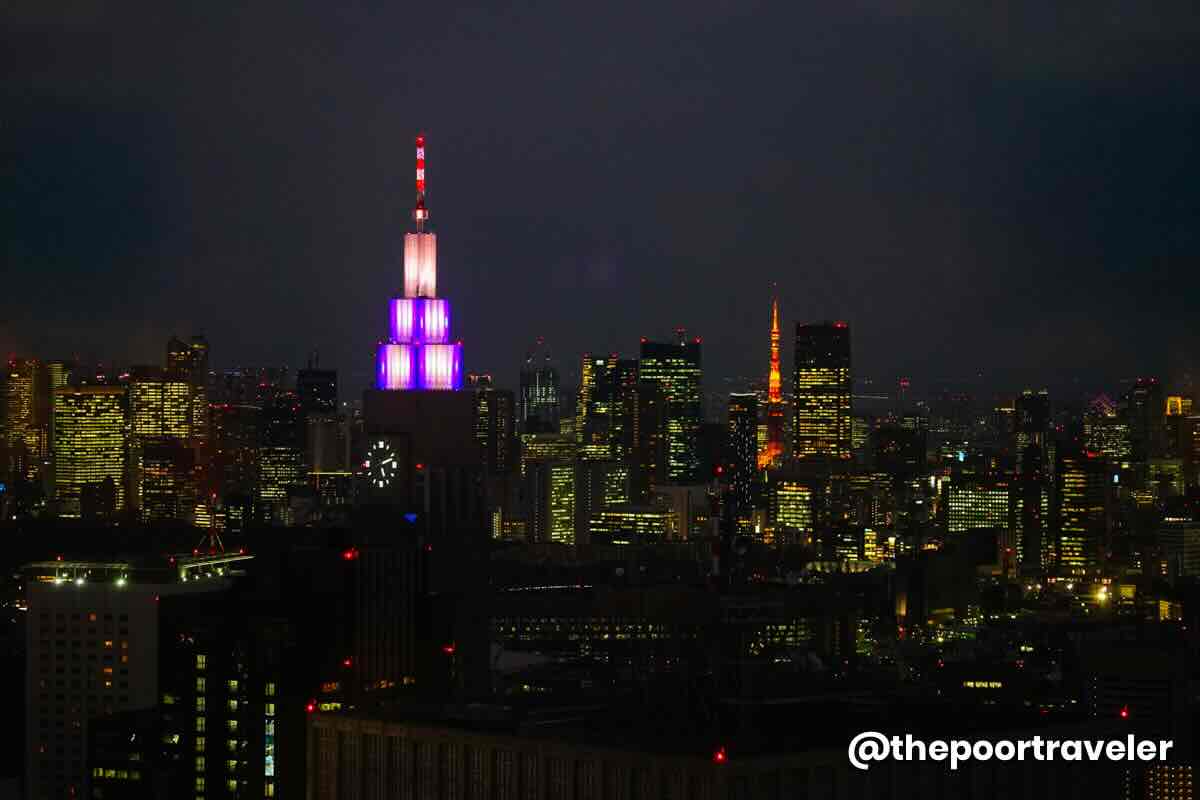
This twin-towered beast has two observatories and from here you can see the Tokyo Tower and the Tokyo SkyTree. You can even see Mount Fuji on a clear day. At least that’s what I’ve been told. I can’t confirm because we visited at night. But if you can make it before sunset, that would be super because you’ll get to enjoy the view in daytime, at twilight, and at night!
It’s completely free. No entrance fee, but you still get those breathtaking cityscapes. The Tokyo Metropolitan Building is the ultimate budget traveler’s hack! Because it’s free and there are only two elevators, expect to fall in line a bit, but the wait is worth it.
Address: Tokyo Metropolitan Government Building, 2 Chome-8-1 Nishishinjuku, Shinjuku City, Tokyo 163-8001, Japan
Nearest Subway Station: Tocho-mae Station (Toei Oedo Line)
Opening Hours: North Observatory – Daily, 9:30 AM – 11:00 PM (Closed on the first and third Tuesday of the month); South Observatory – Daily, 9:30 AM – 5:30 PM (Closed on the second and fourth Monday of the month). The building is closed on December 29-31 and January 2-3.
2. Senso-ji (Asakusa Kannon Temple)
Asakusa is one of the most well-known neighborhoods in Tokyo, primarily due to the iconic Senso-ji.
Not only is it Tokyo’s oldest temple — dating all the way back to 645 AD — it’s also one of the most visited and visually stunning landmarks in the city. And the best part? It won’t cost you a single yen to visit!
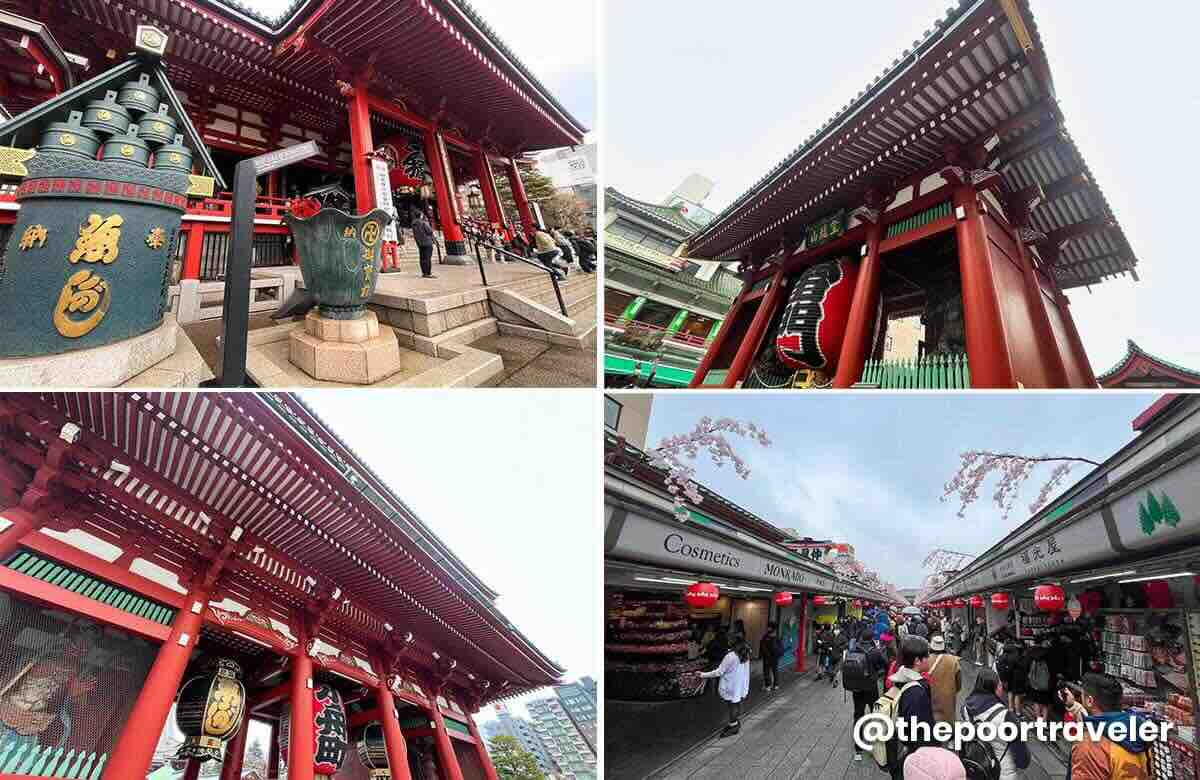

If you’re walking from Asakusa Station, the first structure that will greet you is the Kaminarimon (Kaminari Gate), constructed over a thousand years ago. From here, you’ll be walking down Nakamise-dori, a 250m long alley flanked with shops selling souvenirs and Japanese snacks. It’s a great place to browse, people-watch, or try senbei (rice crackers) and taiyaki (fish-shaped pastries) — though of course, the food isn’t free! Let’s be clear about that. Don’t just take those pancakes without paying! LOL
At the end, you’ll find Senso-ji’s main hall, built as a tribute to Kannon, the goddess of mercy. You’ll see visitors lighting incense for good luck, making wishes at the omikuji (fortune-telling stalls), and admiring the intricate details of the temple grounds.
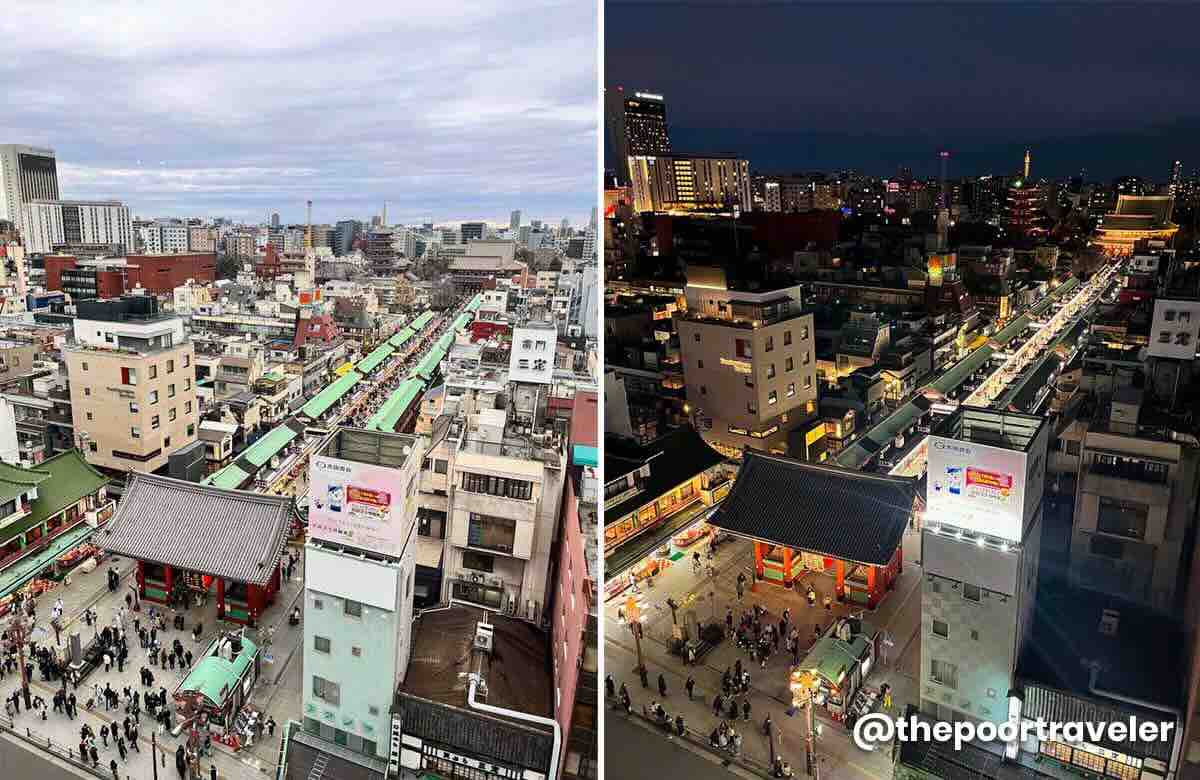
By day, Senso-ji is bustling with energy and bursting at the seams with people, which is probably why it is sometimes tagged as a tourist trap, but I disagree. You see, I usually visit at night, when it transforms into a serene, beautifully lit-up site. Whether you’re here for the history, the culture, or just the snacks, this temple is an absolute must-visit—and did we mention it’s completely free?
Address: Senso-ji, 2 Chome-3-1 Asakusa, Taito City, Tokyo 111-0032, Japan
Nearest Station: Asakusa Station (Tokyo Metro Ginza Line, Toei Asakusa Line, and Tobu Skytree Line)
Opening Hours: Main Hall – Daily, 6:00 AM/6:30 AM – 5:00 PM; Grounds – 24/7
3. Meiji Shrine
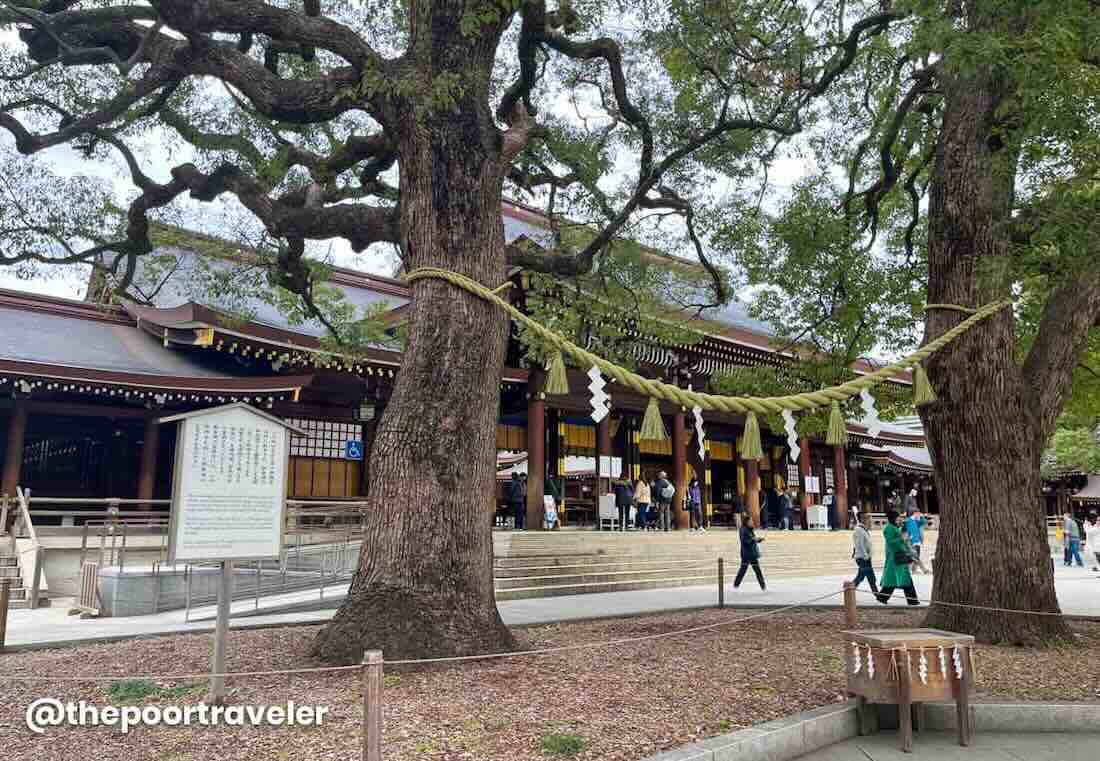
The Meiji Shrine is a peaceful oasis right in the heart of the city. It is located in Shibuya, next to the famous Harajuku district. Cradled inside a lush, 170-acre forest, this sacred site was built in 1921 in honor of Emperor Meiji and Empress Shoken, the beloved rulers who helped modernize Japan in the late 19th century.
The shrine grounds are huge, so take your time and admire the verdant surroundings and the breath of fresh air. You’ll pass through the massive wooden torii gate, and follow the wide pathway leading to the main shrine.
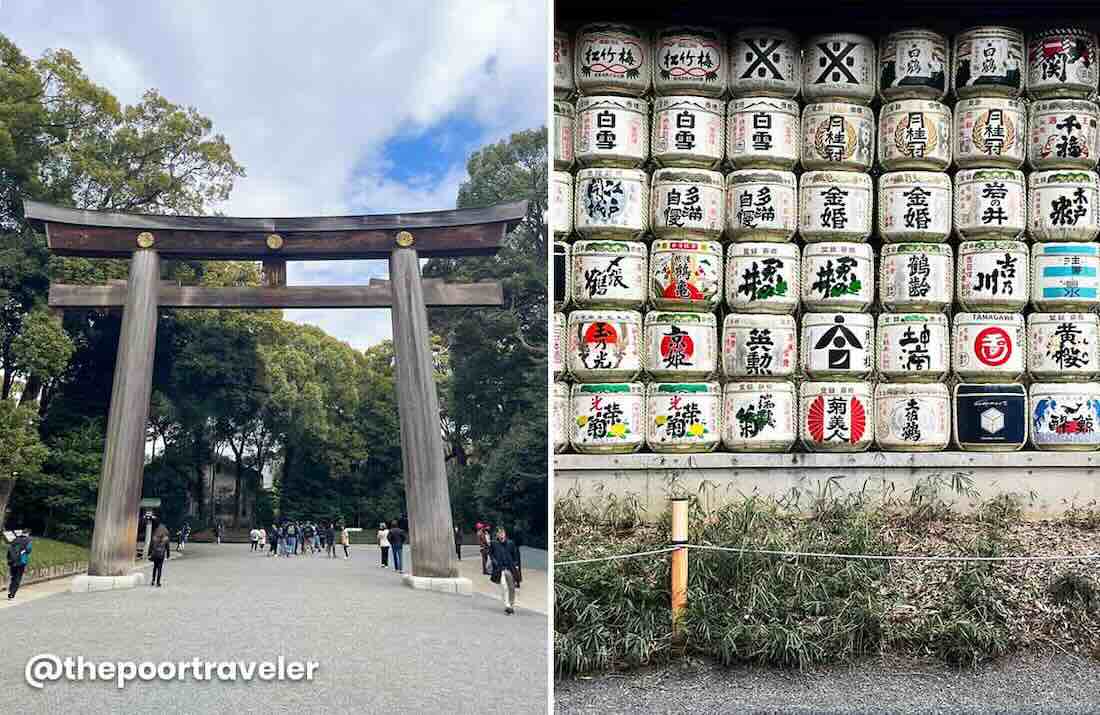
At the shrine, you can witness traditional Shinto rituals, make a wish by writing on ema (wooden prayer plaques), and even see an occasional Shinto wedding procession, with couples dressed in stunning traditional attire. If you’re into sake, check out the impressive wall of sake barrels, donated by breweries from all over Japan as offerings to the deities.
Shrine admission is completely free, but the teahouse garden tucked next to it charges ¥500 per person.
Lying next to the shrine is Yoyogi Park, which you can also access for FREE! Takeshita-dori, the center of youth culture in Tokyo, is also right across the street, and yes, you can explore it for FREE too.
But there’s another iconic spot not too far away.
Address: Meiji Shrine, 1-1 Yoyogikamizonocho, Shibuya, Tokyo 151-8557, Japan
Nearest Station: Harajuku Station (JR Yamanote Line)
Opening Hours: The shrine opens at sunrise and closes at sunset. Time varies depending on the month.
Entrance Fee: Main shrine grounds, FREE; Teahouse garden, ¥500
4. Shibuya Crossing & Hachiko Statue
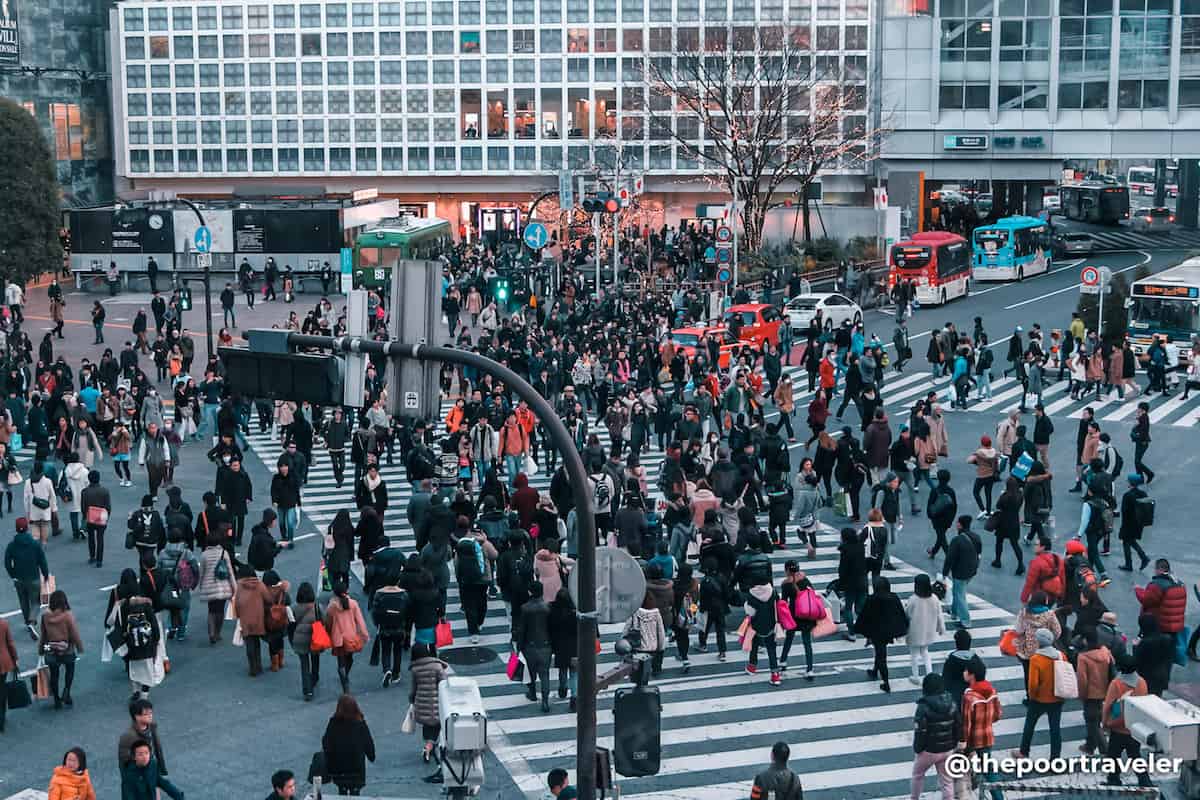
Said to be the world’s busiest intersection, Shibuya Crossing perfectly exemplifies Tokyo’s organized chaos. Even though this is probably the most touristy thing to do in the city, join the hundreds (sometimes over a thousand!) people flood the intersection all at once when the lights turn green.
If you don’t want to join the madness, you can just observe from a quiet distance, maybe from spots like Shibuya Sky, Magnet by Shibuya 109, or even the adjacent Starbucks store (which, by the way, is one of the busiest branches on the planet). Or fall in line for a moment with the statue of Hachiko, the most beloved faithful dog.
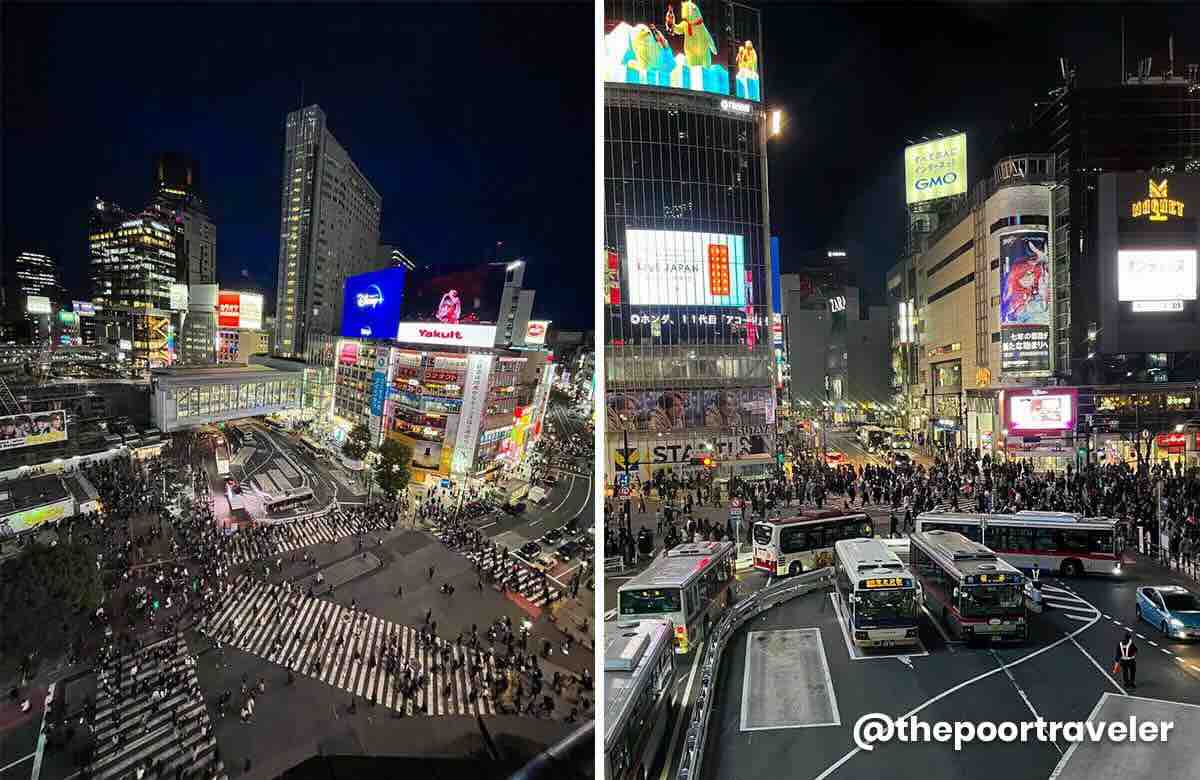
At night, this area surrounding Shibuya Station really comes alive with the kind of urban energy that makes Tokyo feel straight out of a cyberpunk movie.
Whether you’re snapping pics, filming a time-lapse, or just feeling the moment, just being in this area Shibuya is an experience on its own.
Address: Shibuya Crossing, 2-2 Dogenzaka, Shibuya-ku, Tokyo 150-0043, Japan
Nearest Station: Shibuya Station (JR Yamanote Line)
5. Akihabara
Another area that best illustrates Tokyo’s electric personality is Akihabara. If you love anime, manga, or video games, this is the place to be — and yes, you can see it all for free! Now I’m rhyming!
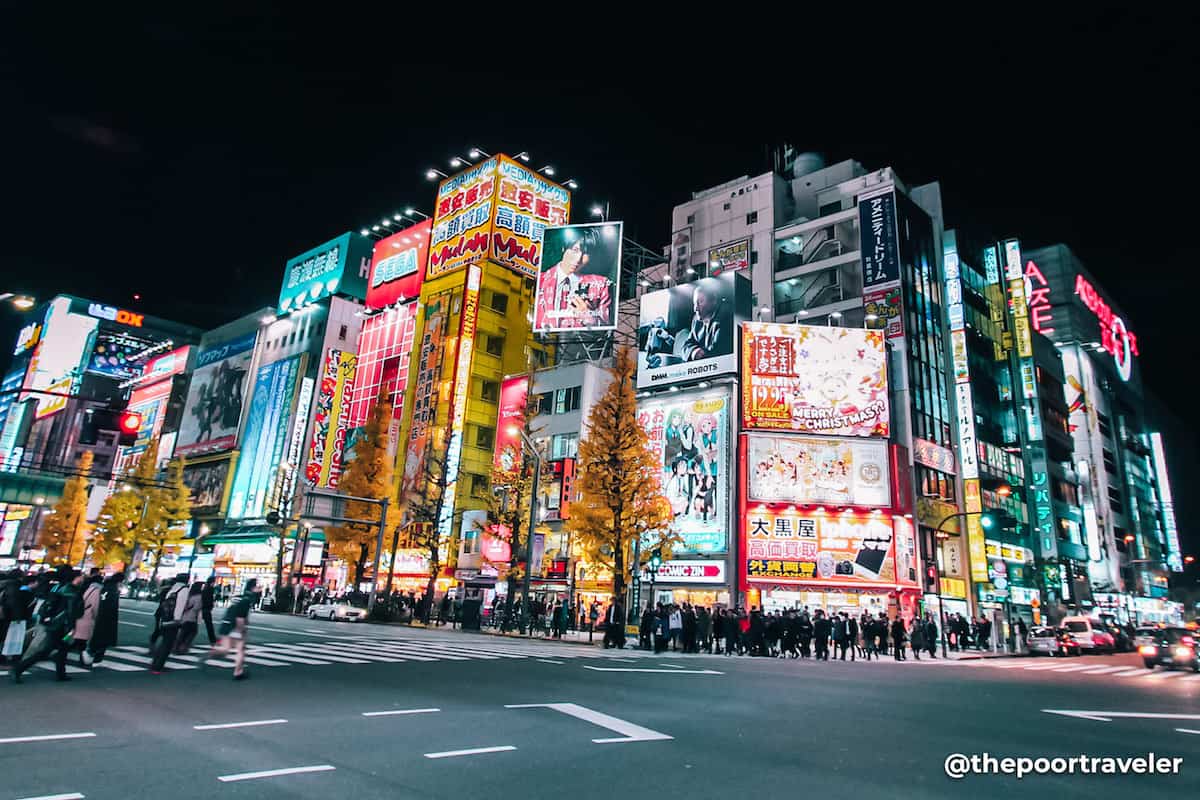
Akihabara is the otaku’s ultimate mecca and Tokyo’s quirkiest destination. The streets are lined with towering electronics stores, anime billboards, and gachapon (capsule toy) machines as far as the eye can see.
For anime and manga lovers, browsing stores like Animate, Mandarake, and Radio Kaikan is practically a pilgrimage — even if you don’t buy anything, just admiring the sheer volume of collectibles is worth the trip.
Gamers? You can check out classic arcades like Hey and Taito Station. My favorite spot here is probably Super Potato, an unassuming store where you can purchase nostalgic game consoles from family computers to Atari. They even sell old-school Gameboys and tamagochi!
Or just enter gadget stores! Bic Camera and Yodobashi have colossal multi-story branches here!
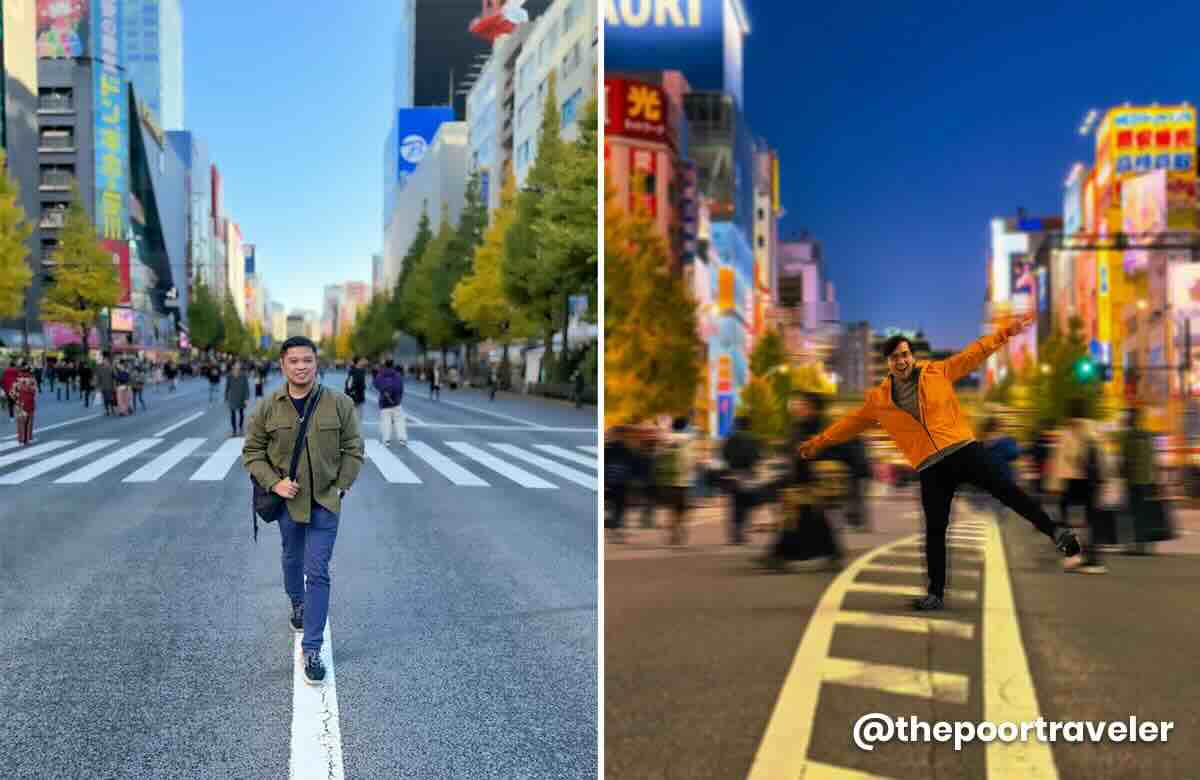
And if you’re just here for the vibe, take a walk down Chuo-dori, the main street, especially on Sunday afternoon when it becomes a pedestrian-only zone. It’s the best way to experience Akihabara’s unique atmosphere — without spending a single yen!
From Akihabara, if you keep walking north, you’ll eventually reach the next FREE item on this list.
Address: Akihabara, Sotokanda, Chiyoda-ku, Tokyo 101-0021, Japan
Nearest Station: Akihabara Station (JR Yamanote Line, JR Keihin-Tohoku Line, and Sobu Line)
6. Ueno Park
But before you arrive in Ueno Park, you’ll be passing through Ameyayokocho, a vibrant shopping street offering all sorts of products! But once you make it through the crowd, you’ll find yourself at the gates of Ueno Park.
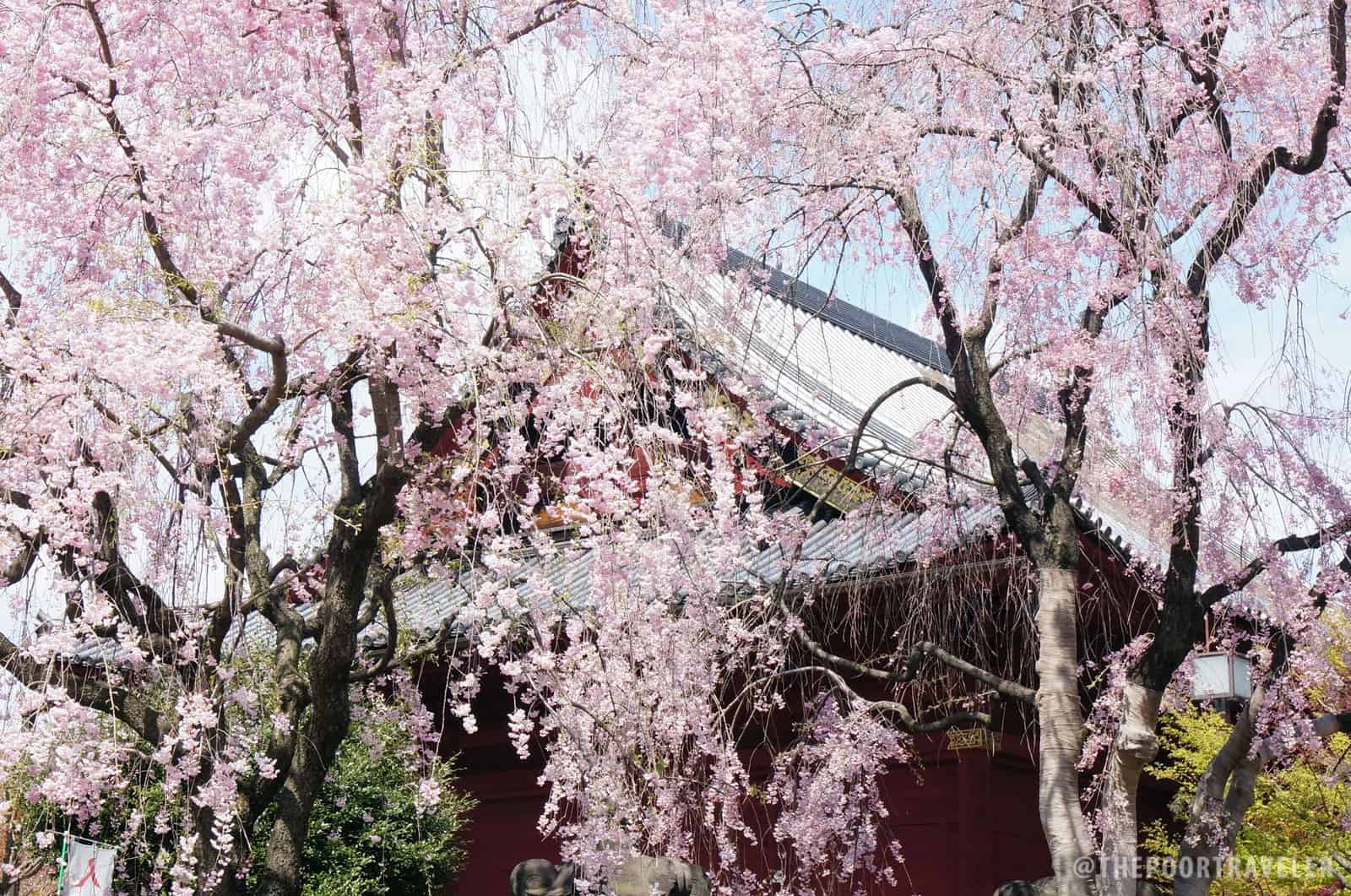
Ueno Park is most well-known as one of the best spots to see the cherry blossoms. In spring, the park is flooded with massive crowds — a mixture of locals and tourists, all enjoying the colorful season under the shade of over 1,000 cherry trees.
But when it’s not sakura season, it is one of Tokyo’s most peaceful corners, especially in the early morning. Stroll around Shinobazu Pond, where you’ll find lotus flowers, turtles, and even a small shrine in the middle of the water. The park itself is free of charge, but it is surrounded by six museums, some of which collect minimal entrance fees, ranging from 500 to 1,000 yen. You can spend a few hours learning more about the city here.
Address: Ueno Park, 5-20 Uenokoen, Taito City, Tokyo 110-0007, Japan
Nearest Station: Ueno Station (JR East Line, Tokyo Metro Ginza Line, and Hibiya Line)
Entrance Fee: The park itself is FREE, but some museums charge a fee.
- Tokyo Metropolitan Art Museum: FREE
- Shitamachi Museum: JPY 300
- National Museum of Western Art: JPY 500
- National Museum of Nature & Science: JPY 650
- Tokyo National Museum: JPY 1000
- Ueno Royal Museum: Fees vary with each exhibition.
7. Oji Inari Shrine
Oji is one of those hidden neighborhoods in Tokyo that most tourists overlook, but if you’re the type who doesn’t always like going with the flow, spending a few hours here could be worth it! Located in Kita Ward, Oji has a relaxed, old-Tokyo feel, which is in full display at its key attractions like the Oji Inari Shrine (not to be confused with Oji Shrine, which is also nearby).
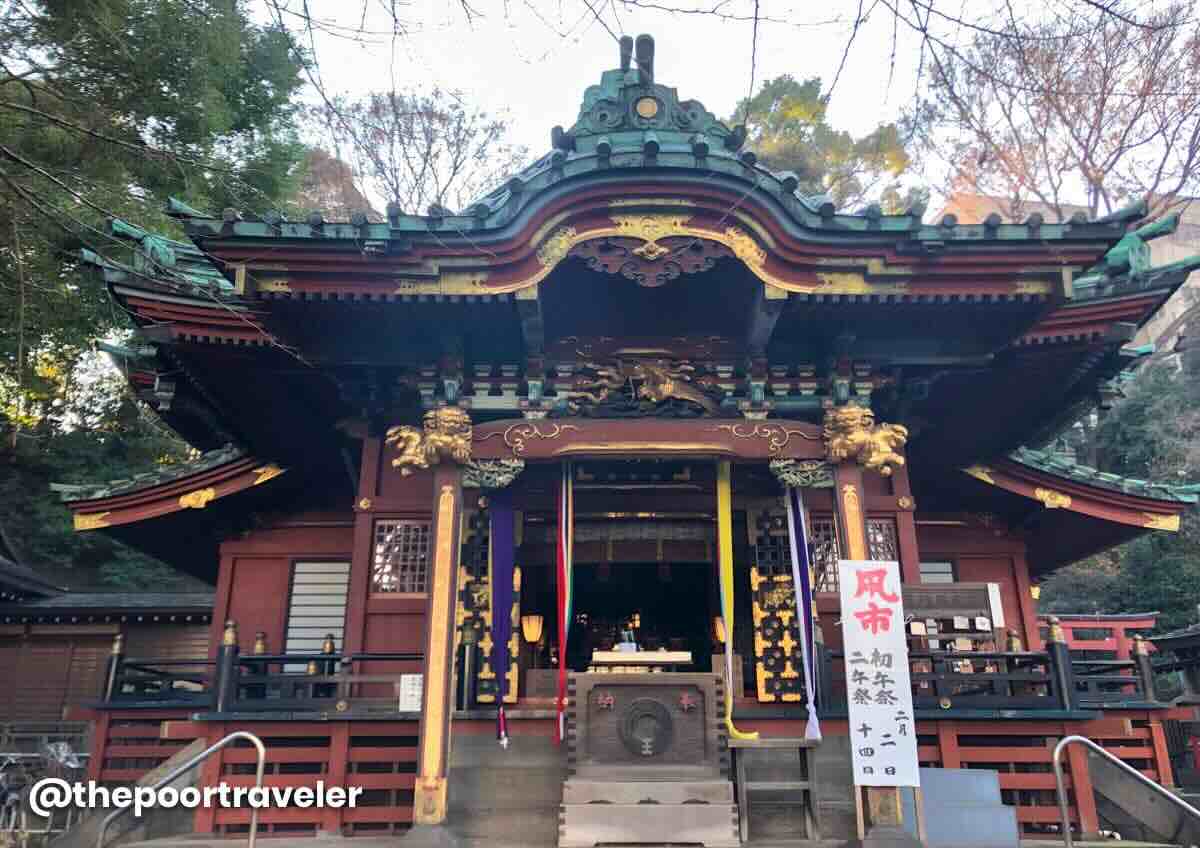
Built in 1822, this shrine is dedicated to Inari, the Shinto deity of rice and prosperity, and is said to be one of Tokyo’s oldest Inari shrines. Every New Year’s Eve, Oji hosts the Fox Parade (Kitsune no Gyoretsu), where people wear fox masks and reenact a legend about fox spirits gathering at this shrine!
Next to the main temple is a short series of torii gates that will take you to a big rock that is believed to be miraculous in a way.
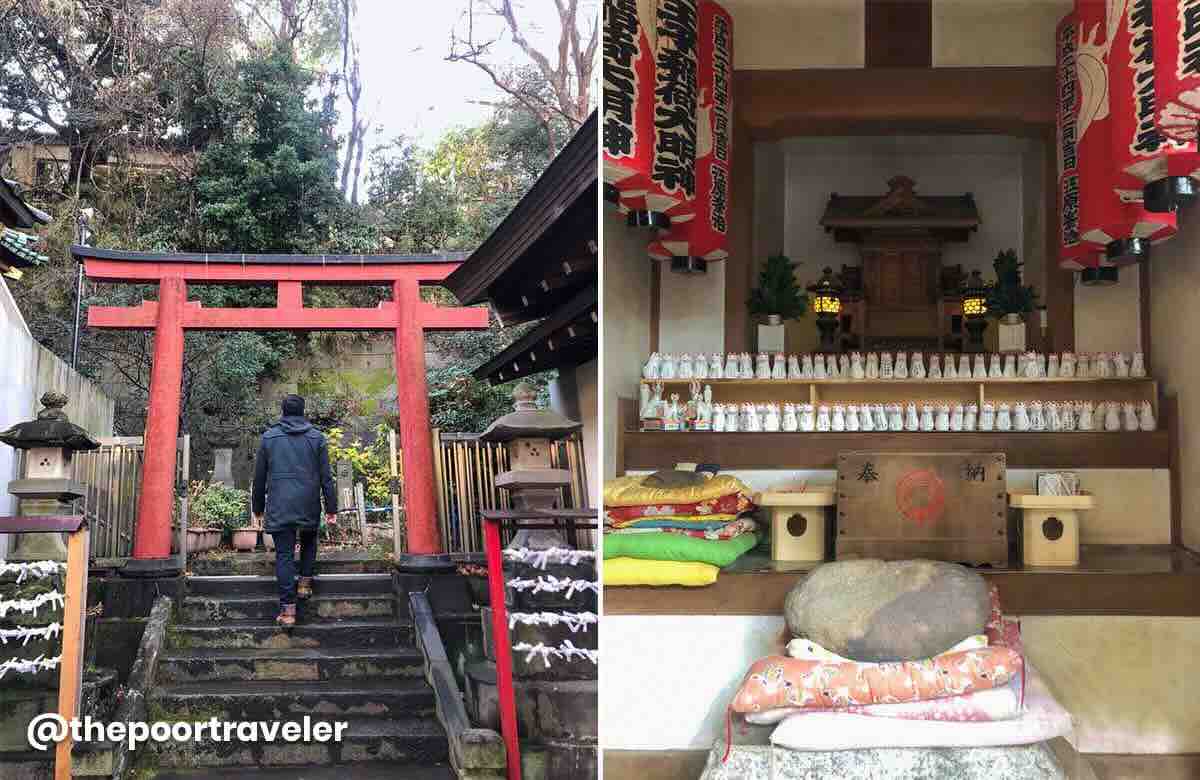
Devotees hold this rock while thinking of what they want to attain, and then, legend has it that if they are able to lift this rock from its place, that wish will come true. Otherwise, according to legend, that dream isn’t for you. Vins and I tried it one at a time, and we both were able to lift it up. I still remember what I wished that time, and YES, it came true.
Just a short walk from the Oji Inari Shrine lies the next free spot on our list.
Address: Oji Inari Shrine, 1 Chome-12-26 Kishimachi, Kita City, Tokyo 114-0021, Japan
Nearest Tram Station: Oji-ekimae Station (Toden Arakawa Line)
Nearest Train Station: Oji Station (JR Keihin-Tohoku Line)
8. Asukayama Park
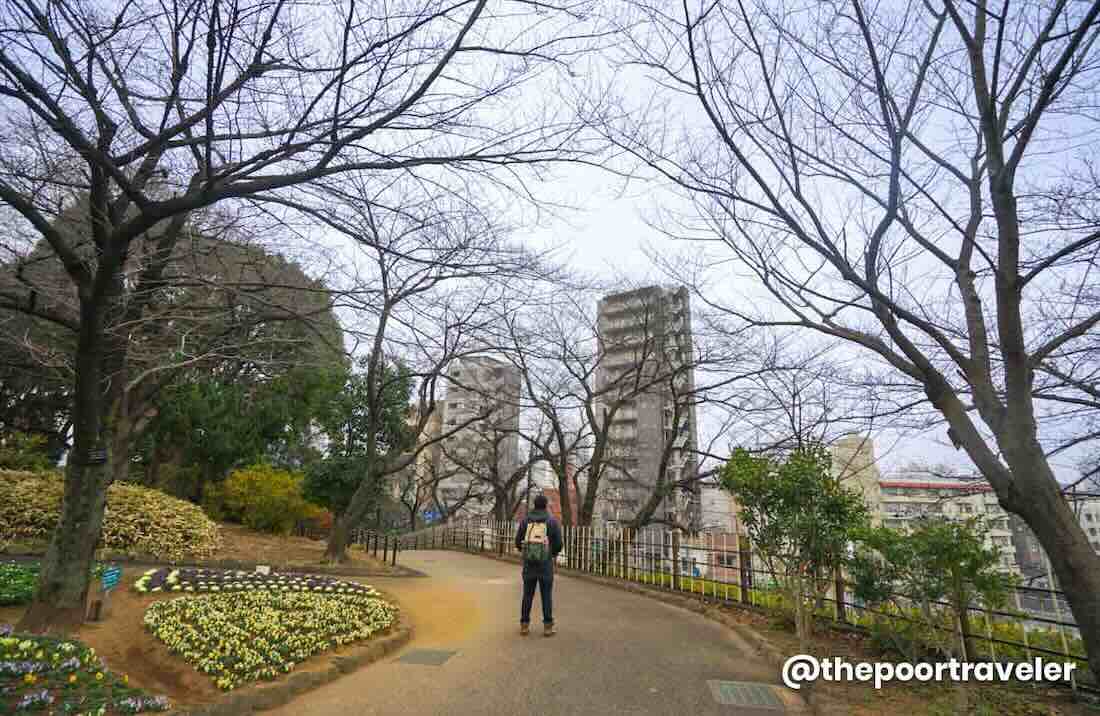
Asukayama Park is one of Tokyo’s OG cherry blossom spots. This park has been a hanami (flower viewing) favorite since the Edo period. Back then, the Daijō-kan established a number of parks in Tokyo. Among them are Ueno Park, Asakusa Park, and Asukayama Park. While others have become crowd-magnets, Asukayama Park remain an oasis of calm in the middle of the city.
During our visit, there was no one else in the park. We had it all to ourselves. You’ll also find a couple of well-preserved trains inside the park, just next to a children’s playground. It also has three museums: the Paper Museum, Asukayama Museum, and Shibusawa Memorial Museum.
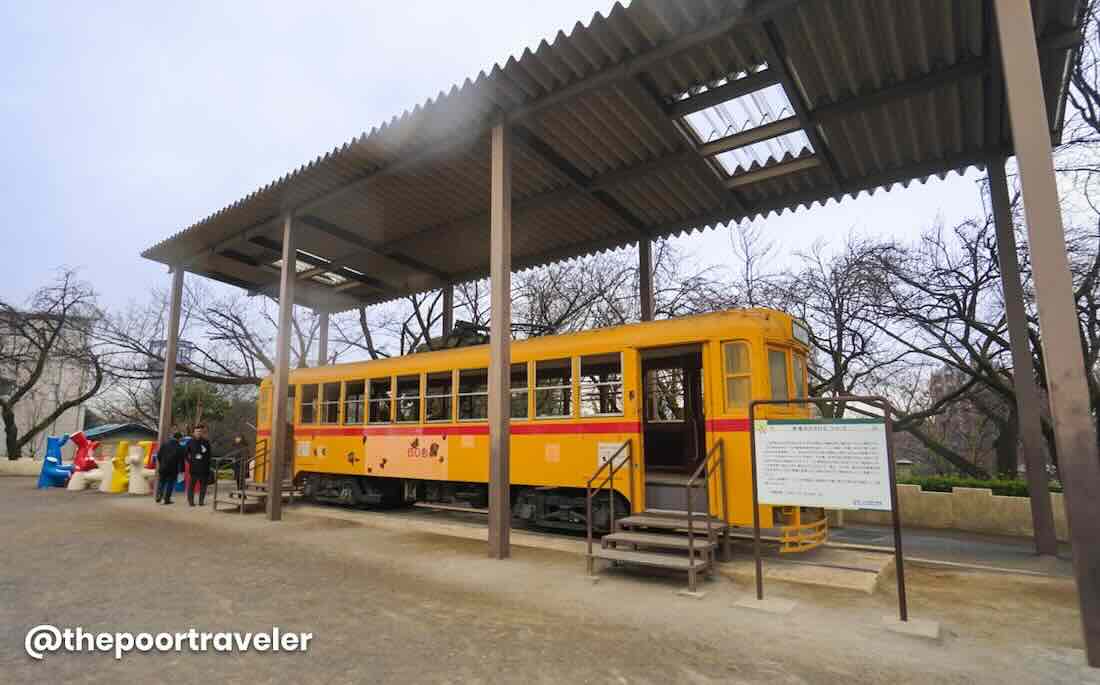
We visited in the middle of winter, so there wasn’t much color. But in spring, the park transforms into an unforgettable sakura destination. The park is covered with cherry trees, planted in the 18th century. If you’re visiting in late March or early April, instead of going to the crowded Ueno Park, come to Asukayama Park instead and enjoy the cherry blossoms better.
Both the Oji Inari Shrine and the Asukayama Park are along the historic Toden Arakawa Line (aka Tokyo Sakura Tram), Tokyo’s last surviving streetcar line. Just watching the old-school tram roll through the neighborhood adds to its nostalgic charm.
Address: Asukayama Park, 1 Chome-1-3 Oji, Kita City, Tokyo 114-0002, Japan
Nearest Tram Station: Asukayama Station (Toden Arakawa Line)
Nearest Train Station: Oji Station (JR Keihin-Tohoku Line)
9. Odaiba
If you’re looking for a blend of futuristic vibes, stunning views, and fun attractions, look no further than Odaiba — Tokyo’s waterfront wonderland! Located on a man-made island in Tokyo Bay, Odaiba is a hotspot for everything from shopping malls and theme parks to jaw-dropping views of Rainbow Bridge and the iconic Gundam Statue.
But the Gundam Statue we saw a few years ago is no longer here. There is a different giant Gundam figure in the area but we haven’t visited it yet. It’s really been a while since we were last here.
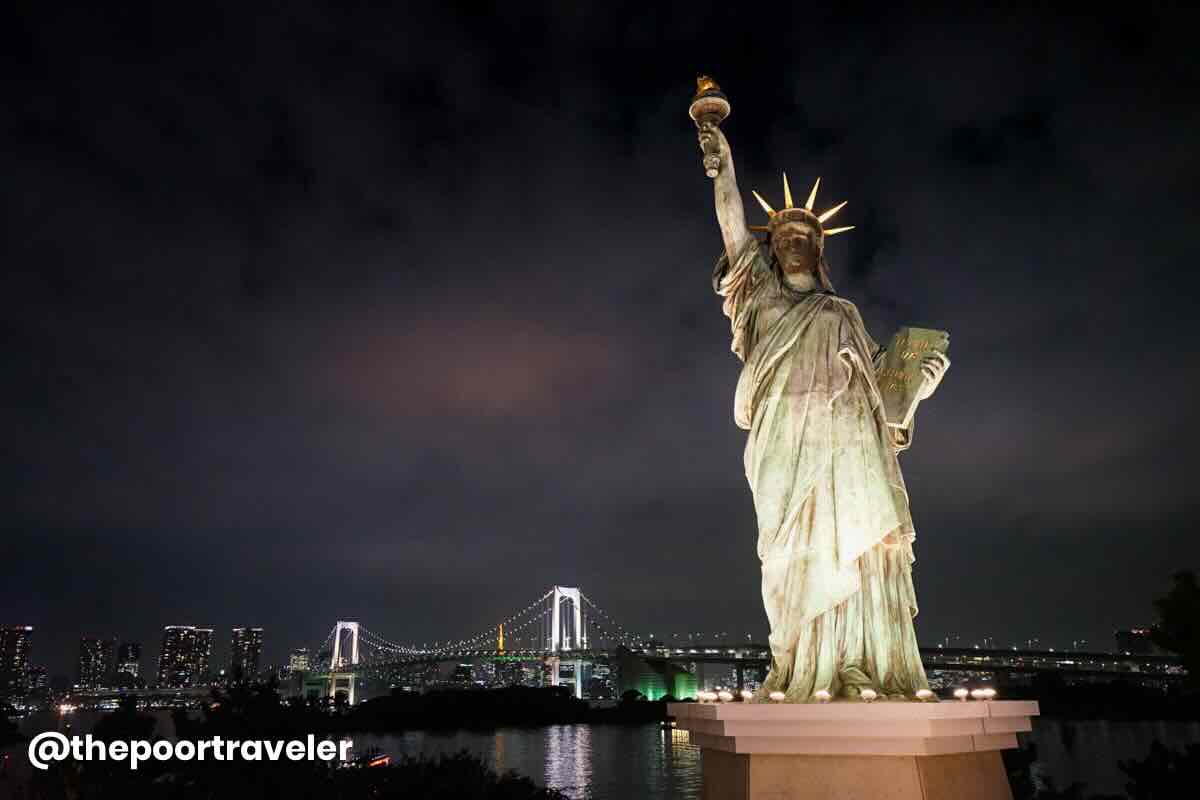

Anyway, you can start by strolling along the waterfront and enjoying the views of the Tokyo skyline, or head to Odaiba Seaside Park, where you can relax by the beach or take selfies with the mini Statue of Liberty that stands near the shore.
The best part? While Odaiba is home to lots of attractions that charge a fee, just wandering around the area and taking in the sights is completely free.
Address: Odaiba, Tokyo, Japan
Nearest Station: Daiba Station (Yurikamome Line)
10. Imperial Palace East Gardens
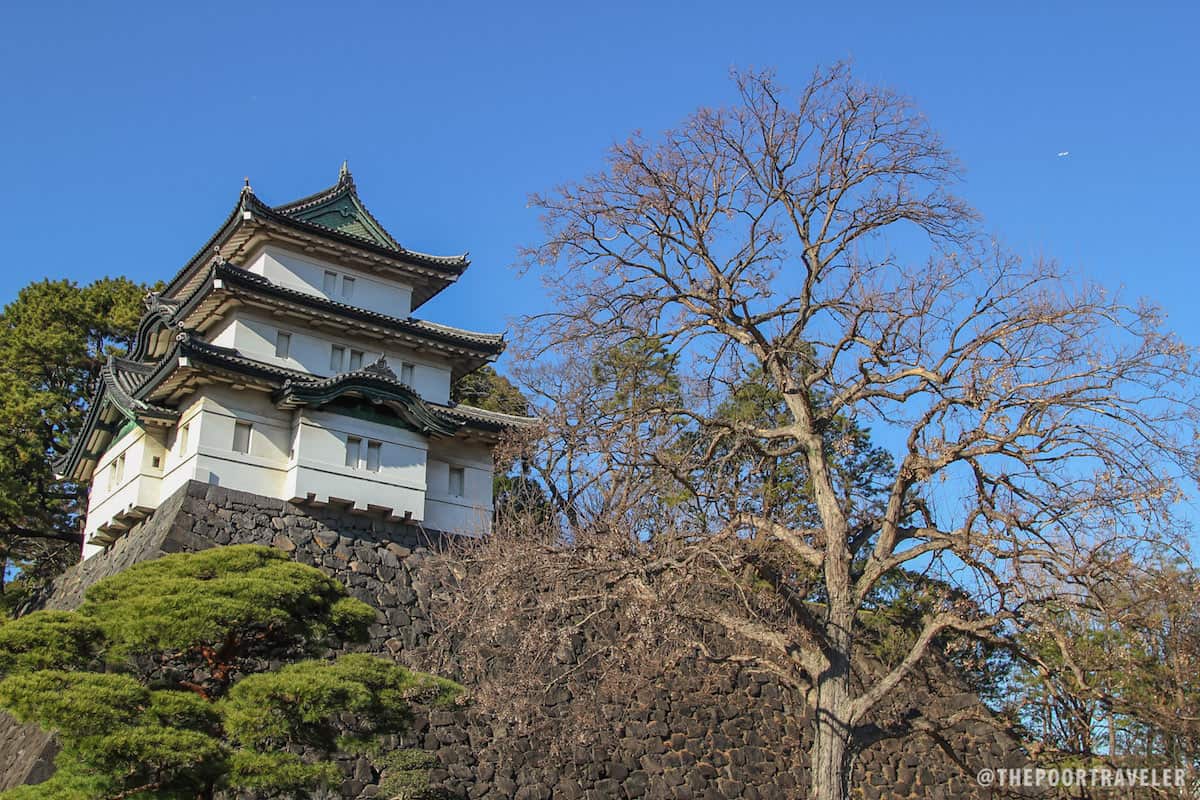

Located at the site where Edo Castle used to stand, the Imperial Palace sits at the center of a large park, scribbled with wide green moats and colossal stone dykes. Two bridges serve as the entrance to the inner section: the Maganebashi (Eyeglass Bridge) and Nijubashi (Double Bridge).
But it remains the official residence of the Japanese Imperial Family so you can’t just enter the building or the immediate area surrounding it. Thankfully, the East Garden is accessible to anyone year-round (except Mondays and Fridays).
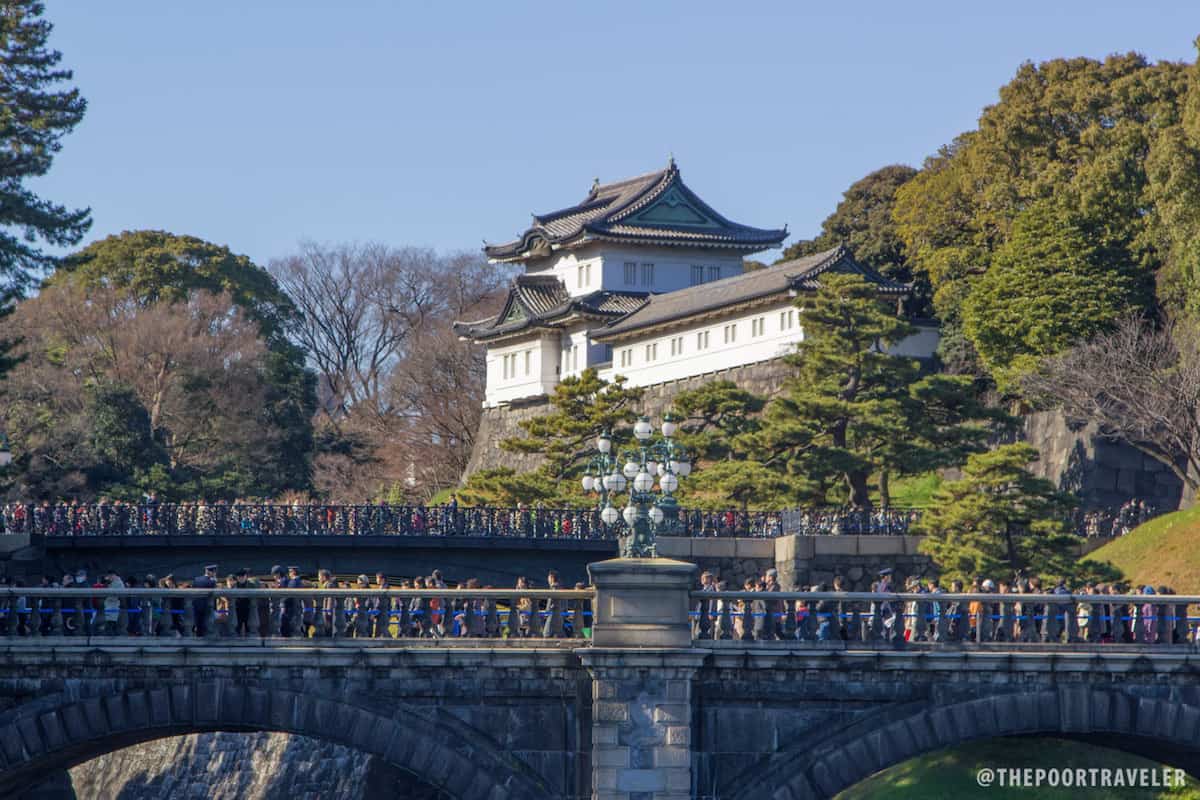
The rest of the complex open to the non-touring public only twice a year: on January 2nd for Emperor Naruhito’s New Year Greeting and February 23rd, to celebrate his birthday. I haven’t seen the current emperor yet, but more than a decade ago, I was able to see his father, the former emperor Akihito. But I still remember the experience clearly.
The line snaked from the main building all the way to the roads, but it moved fast and in an extremely organized fashion. Just a few moments after I reached the central grounds, Emperor Akihito, Empress Michiko and the rest of the royal family made an appearance and addressed the crowd. Soon, everyone cheered at the top of their lungs, “Banzai!”
Address: Imperial Palace, 1-1 Chiyoda, Chiyoda City, Tokyo 100-8111, Japan
Nearest Stations: Otemachi Station (Exit D2), Nijubashi-mae Station (Exit 6), and Tokyo Station (Marunouchi Central Exit)
Emperor’s Appearance Dates: January 2 (New Year Address) and February 23 (Emperor’s Birthday)
Where to Stay in Tokyo
Tokyo is never short of accommodation options. From luxury to budget, there is something for every type of traveler. Because of their accessibility, Tokyo, Shinjuku, and Ueno stations are the favored tourist bases. Here are some of the top-rated budget hotels in these locations.
🔥🔥🔥 Use AGODATPT for 10% off on select hotels! 🔥🔥🔥
The Poor Traveler readers and followers can now use a special discount code to score 10% discount, up to USD 100 (roughly PHP 5700)! To apply and avail of the promo code, visit AGODATPT Promo Code.
Top Budget Hotels near Tokyo Station


Top Budget Hotels near Shinjuku Station


Top Budget Hotels near Ueno Station
Ueno is our absolute favorite area to stay in Tokyo. When we’re in the city, we always stay here, close to Ueno Station and Ueno Park because it’s easily accessible and there is a direct line to Narita Airport. There are also plenty of relatively affordable hotels in the area.


Search for more Tokyo Hotels!
Have Peace of Mind While Traveling!
Getting a travel insurance is optional, but we highly recommend this, especially when traveling abroad. Travel can be unpredictable, and though we hope we’ll never use it, having it gives us peace of mind in case of unexpected delays, cancellations, or emergencies.
For international destinations, consider PGA Sompo’s TravelJOY Plus insurance. You can GET IT HERE. Don’t forget to use WORTHIT for a special affordable rate.
Updates Log
2025 10 15 – First uploaded
Photos by: Yosh Dimen, Vins Carlos, and Asta Alvarez




